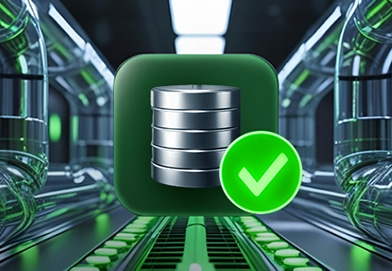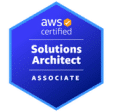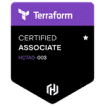I. Introduction

Software as a service (SaaS services) businesses have gained immense popularity in recent years, revolutionizing the way organizations access and utilize applications. Unlike traditional software models, a SaaS provider allows users to access applications and services directly through the internet, eliminating the need for complex installations and maintenance. This convenient and scalable approach has made SaaS providers a go-to choice for businesses across various industries.
However, as the adoption of SaaS continues to grow, so does the importance of ensuring robust security measures. SaaS businesses deal with vast amounts of sensitive data, including customer data, financial records, and intellectual property. Any data breach or security compromise can have severe consequences, such as financial loss, legal liabilities, and damage to the company’s reputation.
To protect your SaaS business and gain the trust of your customers , it is crucial to prioritize security. In this blog post, we will outline six essential steps that you need to take to begin securing your SaaS businesses effectively. These steps will help you proactively identify and address potential security risks, establish a strong security foundation, protect data privacy, secure your infrastructure and networks, and have an incident response plan.
By following these steps, you can enhance the security posture of your SaaS apps, mitigate risks, and safeguard your valuable assets and customer data. Let us dive into the details and explore each step in depth.
II. Step 1: Assess your Security Risks

Identify Potential Security Threats and Vulnerabilities
Before implementing any security measures, it is essential to identify and understand the potential security threats and vulnerabilities that SaaS vendors may face. This involves conducting a thorough analysis on your SaaS systems, infrastructure, and processes.
Start by identifying common security threats such as unauthorized access, data breaches, malware attacks, and insider threats. Additionally, consider specific threats that are relevant to your industry or the nature of your SaaS business. Stay informed about the latest cybersecurity trends and emerging threats to ensure your risk assessment remains up to date.
Perform a Comprehensive Risk Assessment
Once you have identified threats and vulnerabilities, the next step is to conduct a comprehensive risk assessment. This involves evaluating the likelihood and potential impact of each identified risk.
Assess the vulnerabilities in your systems, including weak access control, outdated software, or inadequate encryption. Analyze the potential impact of these vulnerabilities in your business operations, data integrity, and customer trust. Assign a risk rating to each identified risk based on its severity and likelihood of occurrence.
Prioritize Risks Based on Severity and Potential Impact
After assessing the identified risks, it is crucial to prioritize them based on their severity and potential impact. Focus on risks that pose the greatest threat to your business and have the highest potential impact if exploited.
Consider the likelihood of each risk occurring and the potential consequences. This will help you allocate your resources effectively and address the most critical risks first. Remember that not all risks can be eliminated entirely, but you can implement measures to reduce their likelihood or impact.
Define Risk Mitigation Strategies
With a prioritized lists of risks, it is time to define risk mitigation strategies. Develop a comprehensive plan that outlines specific actions to address each identified risk.
Implement security controls such as robust access management, intrusion detection systems, and regular security audits. Establish incident response procedures to ensure a prompt and effective response to security incidents. Train your security teams on best practices and create awareness in your business environment.
III. Step 2: Establish a Strong Foundation

Implement a Robust Identity and Access Management System
To secure your SaaS business, it is essential to implement a robust identity and access management (IAM) system. IAM enables you to control and monitor user access to your systems and data.
Choose an IAM solution that allows for centralized user management, authentication, and authorization. Implement strong user identification and methods such as multi-factor authentication method (MFA) to add an extra layer of security. This helps prevent unauthorized access even if user credentials are compromised.
Enforce Strong Authentication and Password Policies
Enforcing strong authentication and password policies is crucial to protect user accounts and prevent unauthorized access. Require users to create complex passwords with a combination of letters, numbers, and special characters. Encourage regular password updates and prohibit the reuse of old passwords.
Consider implementing additional SaaS security measures such as biometric authentication or time-based one-time passwords (TOTP). These measures further enhance the security of user accounts and reduce the risks of unauthorized access.
Implement Least Privileged Access Controls
Implementing the principle of least privilege is vital to minimize the potential damage from a SaaS security breach. This approach ensures that users have only the necessary access permissions to perform their specific tasks.
Regularly review and assess the access rights of each users. Grant permissions based on job roles and responsibilities, giving users access only to the resources and data they require to fulfill their duties. Restrict administrative access to a limited number of trusted individuals.
Regularly Review and Update Permissions
Access permissions should not be set and forgotten. Regularly review and update access permissions to ensure that they remain aligned with the changing needs of your SaaS business.
Disable or revoke access immediately for employees who leave the company or change roles. Conduct periodic audits to identify and remove any unnecessary or unused accounts. Implement a process for granting temporary access, ensuring that permissions are revoked once they are no longer required.
IV. Step 3: Implement Security Development Practices

Train Developers on Secure Coding Practices
To ensure the security of your SaaS business, it is crucial to train developers and educate employees on secure coding practices. Provide them with comprehensive training and resources that cover secure coding principles, common vulnerabilities, and SaaS authentication best practices for writing secure code.
Emphasize the importance of input validation, secure handling of user data, and protection against common vulnerabilities such as SQL injection and cross-site scripting (XSS). Encourage developers to stay updated on the latest SaaS security trends and incorporate security considerations throughout the software development lifecycle.
Conduct Regular Code Reviews and Security Testing
Regular code reviews and security testing are essential to identify and address potential data security vulnerabilities in your SaaS applications. Conduct thorough code reviews to identify coding mistakes, logic errors, and insecure coding practices.
In addition to code reviews, perform regular SaaS security testing, including penetration testing and vulnerability assessments. These tests help identify potential weaknesses and vulnerabilities in your SaaS applications that malicious actors could exploit.
Implement Secure Coding Guidelines and Standards
Implementing secure coding guidelines and standards provides developers with clear instructions and best practices for writing secure code. Develop a set of coding guidelines that cover topics such as input validation, error handling, data encryption, and secure session management.
Regularly review and update these guidelines to reflect emerging threats and changes in the SaaS security landscape. Encourage developers to follow these guidelines consistently and conduct internal code reviews to ensure compliance.
Stay Up to Date with Security Patches and Updates
Software vulnerabilities are constantly being discovered, and vendors release SaaS security patches and updates to address them. It is crucial to stay up to date with these patches and updates for the software and libraries used in your SaaS business.
Maintain a process for promptly applying security patches and updates to your systems. Regularly monitor vendor websites, security bulletins, and mailing lists for news of any security vulnerabilities or patches related to your software stack.
V. Step 4: Protect Data Privacy

Comply with Relevant Data Protection Regulations (like GDRP and CCPA)
Data protection regulations, such as the General Data Protection Regulation (GDPR) and the California Consumer Privacy Act (CCPA), play a vital role in safeguarding customer data. Ensure that your SaaS business complies with the relevant data protection regulations applicable to your jurisdiction and customer base.
Understand the requirements of these regulations, including obtaining consent for data processing, providing transparency about data usage, and enabling data subject rights such as access, rectification, and erasure. Establish processes and policies to handle data subject requests promptly and effectively.
Encrypt Sensitive Data in Transit and At Rest
To protect sensitive data from unauthorized access, it is crucial to encrypt it both in transit and at rest. Implement secure encryption mechanisms, such as Transport Layer Security (TLS) for data in transit and strong encryption algorithms for data at rest.
Ensure that encryption is applied consistently across your systems and applications. Use secure protocols and algorithms, and regularly update encryption mechanisms to stay current with industry standards and best practices.
Implement Data Access and Logging Mechanisms
Implementing robust data access controls is essential to limit access to sensitive data only to authorized individuals. Use role-based access control (RBAC) or attribute-based access control (ABAC) mechanisms to manage user permissions effectively.
Enable comprehensive logging mechanisms to record access to sensitive data and critical system activities. Log and monitor user activities, including successful and failed login attempts, data access, and modification. Regularly review and analyze logs to identify suspicious activities or potential security breaches.
VI. Step 5: Secure Infrastructure and Networks

Use Secure Hosting and Cloud Service providers
Choosing a secure hosting and cloud services provider is crucial for the overall security of your SaaS business. Conduct thorough research to identify reputable cloud computing providers that prioritize security and adhere to industry best practices.
Look for cloud providers that offer robust security features, such as data encryption, network security, regular backups, and disaster recovery capabilities. Ensure that the provider has a strong track record in protecting customer data and maintaining high uptime and availability.
In addition to choosing a secure hosting and cloud service provider, organizations can further enhance their security by considering the implementation of a Cloud Access Security Broker (CASB). A CASB acts as a security intermediary between the organization’s on premises infrastructure and cloud service providers, providing an additional layer of security and control over cloud-based resources.
Implement Firewalls, Intrusion Detection Systems, and Antivirus Software
To protect your infrastructure and networks, it is essential to implement robust security measures such as firewalls, intrusion detection systems (IDS), and antivirus software.
Firewalls act as a barrier between your internal systems and external networks, monitoring and filtering incoming and outgoing network traffic. Intrusion detection systems detect and respond to unauthorized or malicious activities. Antivirus software helps prevent and detect malware, viruses, and other malicious software.
Regularly Update and Patch Operating Systems and Software
Regularly updating and patching your operating systems and software is vital to address known vulnerabilities and protect against emerging threats. Keep your systems up to date with the latest security patches and software updates provided by vendors.
Establish a process for monitoring and applying updates promptly to mitigate the risk of exploitation. Automated patch management solutions can help streamline this process and ensure timely updates.
Implement Secure Network Segmentation and Monitoring
Implementing secure network segmentation helps limit the impact of a security breach and prevents unauthorized lateral movement within your infrastructure. Divide your network into separate segments based on security requirements and user access levels.
Implement network monitoring tools to continuously monitor network traffic, identify potential threats or anomalies, and respond promptly to security incidents. Monitor logs and employ intrusion detection systems to detect and prevent unauthorized access attempts or suspicious activities.
VII. Plan for Incident Response and Business Continuity
Develop an Incident Response Plan and Team
Preparing for potential security incidents is essential to minimize their impact on your SaaS service. Develop an incident response plan that outlines the steps to be taken in the event of a security breach or other incidents.
Establish an incident response team comprising members from relevant departments, including IT, security, legal, and communication. Define roles and responsibilities for each team member and establish clear communication channels and escalation procedures.
Regularly Test and Update the Incident Response Plan
An incident response plan is only effective if it is regularly tested and updated. Conduct periodic drills and simulations to test the effectiveness of your plan and identify areas for improvement.
Evaluate the response time, coordination, and effectiveness of the incident response team during these exercises. Incorporate lessons learned from each drill into the plan and update it accordingly to reflect changes in your infrastructure, systems, or potential threats.
Implement Data Backups and Recovery Strategies
Data loss can be detrimental to your SaaS application. Implement robust data backup and recovery strategies to ensure that critical data is protected and can be restored in the event of a disaster or security incident.
Regularly back up your data to secure and off-site locations. Consider using both on-premises and cloud-based backup solutions to diversify your data storage. Test the integrity and effectiveness of your backups periodically to ensure their reliability.
Conclusion
Although each one of these measures alone may not be enough to provide complete protection against every threat on the internet, they are a great start!
If you are ready to level up your approach to data security, consider hiring a data security or a data management firm. This will ensure that all of the steps of the process are carried out in an accurate and systematic manner. Data breaches can be costly and cause irreparable damage to your company’s reputation, so if you want to protect your business and make sure it is compliant with all relevant laws, then look no further than a professional data management company.
At Data Sleek, we help SaaS providers optimize their databases, ensure data security, and streamline data into insights.
We’d love to assess your application and see how we can help you improve both performance and security. Contact us to get Started today!







